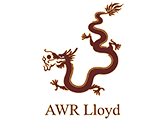Valuation: Best Practice DCF & SOTP
Best practice discounted cashflow (DCF) analysis and multiples-based ‘sum-of-the-parts’ (SOTP) analysis are core to most AWR Lloyd client assignments.
AWR Lloyd develops detailed financial models which can be linked to market demand models and other pricing or costing models. Future free cash flows available to shareholders and debt-holders after all operating costs, capital expenditure and tax, but before debt service and dividends are projected for a base case plan. Scenario analysis is then used to assess the main possibilities of cash flows being significantly higher or lower than the ‘management plan’ projections – and probabilities applied to these scenarios – to achieve a probability-weighted set of projections (resulting in a composite ‘base case’ which reflects ‘expectations’). Probability-weighted free cash flows are then discounted using an appropriate opportunity cost of capital using the CAPM formula which combines a ‘risk free rate’ and the expected return premium on a diversified stock market portfolio multiplied by a ‘beta’ (the extent to which the return from investment in a particular industry is likely to vary in relation to the return from a diversified portfolio). The value side effects including the tax-shield of the debt financing strategy of the company versus an all-equity scenario are then factored in. Current net debt today (all interest-bearing debt net of any cash and marketable securities) is then deducted to obtain an equity value.
For multiples-based analysis we break a company down into geo-industry value segments where key metrics including EBITDA can be applied to ratios obtained from comparable stock exchange listed companies and M&A transactions. We also use a proprietary Forensic Multiples* method which provides more accurate and useful conclusions than conventional EV/EBITDA and PE multiples approaches.
Our basic DCF and SOTP models can be adapted in many ways and can be used in conjunction with a number of other Strategy Consulting and Transactions Advisory work modules. For example, we can adapt our models to understand the historic share price and total shareholder returns (‘TSR’) performance of a company in more detail against synthetic peer comparable indices. We can also then forecast target share price performance into the future based on alternative growth plans and scenarios. This kind of more sophisticated historical and future share price analysis can be part of an assignment for a fund manager assessing a stock (Investment Evaluation & Due Diligence, Transactions Advisory module) or as part of an in-depth strategic review for a listed company (Value Maximizing M< Strategy, Strategy Consulting module).
*Note: Forensic Multiples is a proprietary AWR Lloyd analytical tool.


